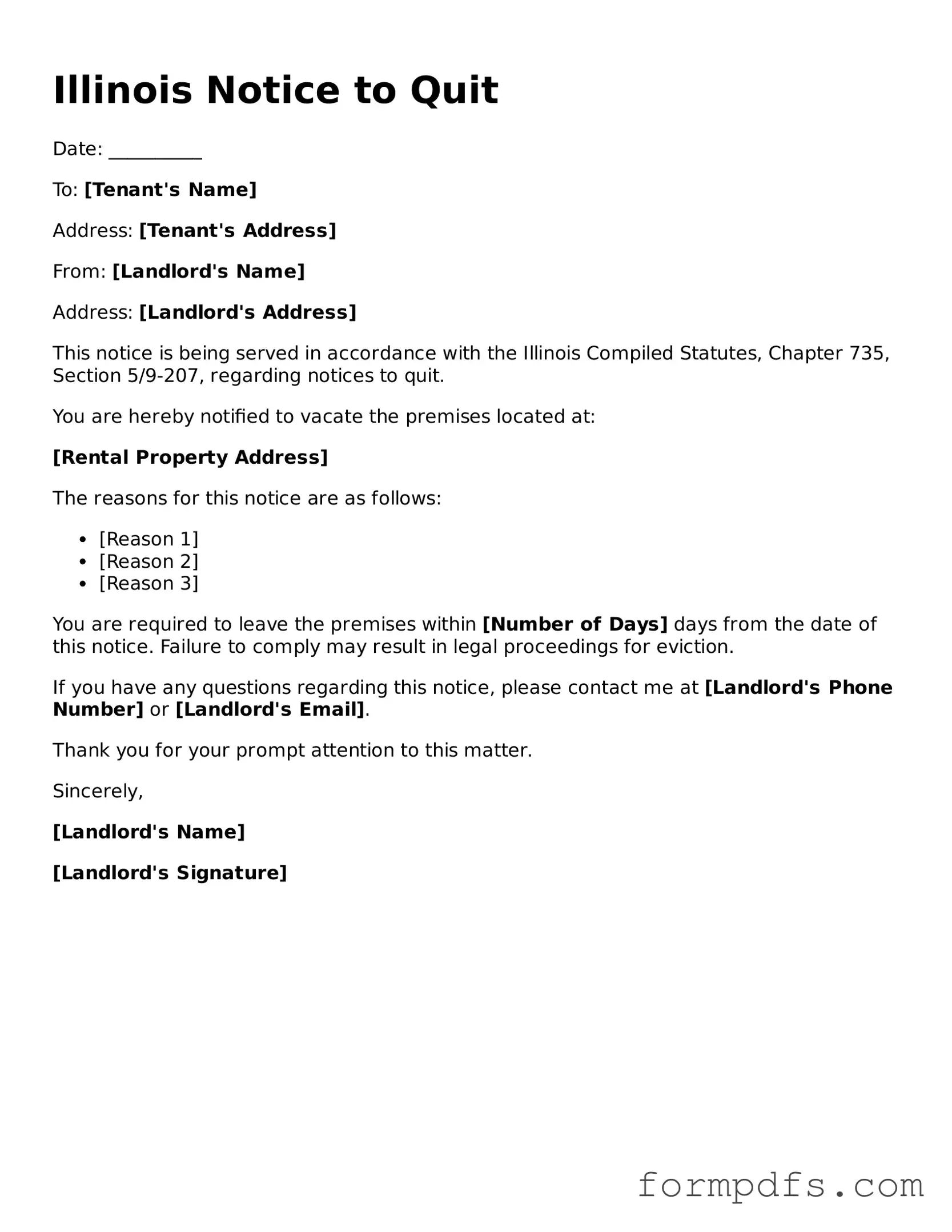What is an Illinois Notice to Quit form?
The Illinois Notice to Quit form is a legal document used by landlords to inform tenants that they must vacate the rental property. This notice is typically the first step in the eviction process. It outlines the reason for the eviction and provides a specific timeframe for the tenant to leave. Depending on the situation, the notice period can vary, often ranging from 5 to 30 days.
When should a landlord use a Notice to Quit?
A landlord should use a Notice to Quit when a tenant has violated the terms of the lease agreement or has failed to pay rent. Common reasons include non-payment of rent, lease violations, or the expiration of a lease without renewal. It is important for landlords to follow the proper legal procedures, as failing to do so can lead to complications in the eviction process.
How does a tenant respond to a Notice to Quit?
Upon receiving a Notice to Quit, a tenant has several options. They can choose to comply with the notice and vacate the property within the specified timeframe. Alternatively, they may wish to resolve the issue by paying overdue rent or addressing lease violations. If a tenant believes the notice is unjust, they may contest it and seek legal advice. It’s crucial for tenants to act promptly, as ignoring the notice can lead to eviction proceedings.
What happens if a tenant does not leave after receiving a Notice to Quit?
If a tenant does not vacate the property after the notice period has expired, the landlord may proceed with filing an eviction lawsuit, known as a forcible entry and detainer action. This legal process can take time, but it allows the landlord to seek a court order for the tenant to leave. It’s essential for both parties to understand their rights and responsibilities throughout this process to avoid further complications.
